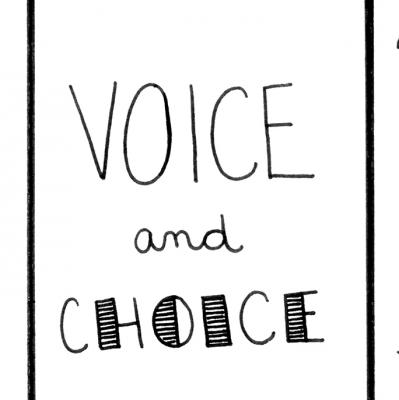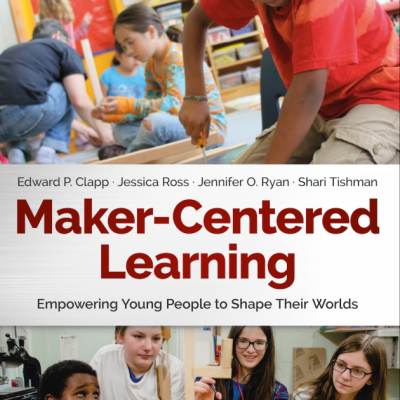A protocol for looking closely at content, considering perspectives and representation, and then redesigning or reimagining that content from one's own perspective. Try out the accompanying Learner Workbook!

A protocol for looking closely at content, considering perspectives and representation, and then redesigning or reimagining that content from one's own perspective. Try out the accompanying Learner Workbook!


A protocol for looking closely at content, considering perspectives and representation, and then redesigning or reimagining that content from one's own perspective. Try out the accompanying Learner Workbook!


Where are we coming from?
The Agency by Design framework for maker-centered learning and its accompanying practices encourage young people to pay close attention to the designed elements of the world, to deconstruct and reconstruct objects and systems, and to see themselves as participants in reimagining the world and their place within it. The designs that young people explore are not only physical. Thinking routines like Parts, Purposes, Complexities, Parts, People, Interactions and Parts, Perspectives, Me have been used by young people and their educators to look closely and critically at systems of governance and power and the various stakeholders involved in these systems. For example, educators from Agency by Design Oakland, a network established by participants in the AbD Origin Project, apply the AbD framework to support equity, look at power structures, and foster students’ critical thinking.
In collaboration with educators in the broader Agency by Design network and those participating in the Making Across the Curriculum project at Washington International School, the AbD team at Project Zero has been developing new tools and practices to support young people to take an even more critical approach toward design and making in order to both interrogate—as well as embody—design choices that challenge systems of oppression, representation, and power.
Design is not neutral
How might we support young people to develop a critical consciousness when looking at, interacting with, and participating in the designed elements of the world?
Design is not neutral. Making is not neutral. Every choice that a designer or maker makes is made in the context of a set of beliefs and ideas about the world. Design justice, a growing field in the realm of design, focuses on the ways that design perpetuates systemic oppression by looking closely at who benefits from design, who is harmed, and how the design of objects and systems might more equitably distribute design’s “benefits and burdens.” Along the lines of design justice, in pedagogic terms, are notions that creativity is not neutral and that classrooms, specifically classrooms that emphasize creativity, privilege dominant culture’s social and cultural perspectives. With forces of systemic oppression built into the very structure of design and concepts of what constitutes creativity, it is critical to support young people to recognize the importance of questioning design and how the decisions of the makers they encounter relate to and reflect representation and power.
Sensitivity to design also means a sensitivity to what is not built-in
Agency by Design defines Sensitivity to Design as "learning to notice and engage with one's physical and conceptual environment by looking closely and reflecting on the design of objects and systems, exploring the complexity of design, and finding opportunity to make objects and systems more effective, more efficient, more ethical, more beautiful, or more __________."
Perhaps just as important as inviting young people to look closely at the designed elements of the world and report what they notice is supporting them to question what they do not see and why. Cultivating a capacity and inclination to critically consume art, media, and other elements of material culture is a first, or early, step to understanding the ways that design empowers, oppresses, and often reproduces existing power structures. As young people—and all of us—engage with the inherent stories and perspectives of the elements of material culture we encounter, it is important that we are equipped with a critical lens and sensitivity to ask questions like: What information is missing? Whose voices are represented, whose are not, and why?
Voice and Choice, a protocol
Voice and Choice is a protocol for looking critically at a piece of content, considering perspectives and representation, and then redesigning or reimagining that content from one’s own perspective. “Content” might refer to a poem, work of art, historical essay, social media post, architectural structure, news article, piece of digital media, environmental plan, etc.
Learners begin by looking closely at a piece of content and then they do the following:
Download the full protocol along with suggested practices for using the protocol. Download the Voice and Choice Learner Workbook, co-created by Julie Rains. Below are three snapshots from the Learner Workbook.

Oakland Learning Community Tatum Omari’s builds on her experience with system redesign to hack her daughter’s soccer gear.

High School technology students in Darlease Monteiro’s class use Parts, Purposes, Complexities to analyze website apps prior to designing their own.

The Agency by Design guide to implementing maker-centered teaching and learning
Maker-Centered Learning provides both a theoretical framework and practical resources for the educators, curriculum developers, librarians, administrators, and parents navigating this burgeoning field. Written by the expert team from the Agency by Design initiative at Harvard's Project Zero, this book
A surge of voices from government, industry, and education have argued that, in order to equip the next generation for life and work in the decades ahead, it is vital to support maker-centered learning in various educational environments. Maker-Centered Learning provides insight into what that means, and offers tools and knowledge that can be applied anywhere that learning takes place.

A rotina ajuda os estudantes a explorar a complexidade ao encorajá-los a olhar atentamente para os detalhes de algo, considerando uma variedade de pontos de vista, de usuários e de partes interessadas e refletindo sobre as próprias conexões e seu envolvimento com o objeto ou o sistema em questão.

Mechanical dissections are a practice that allows learners to discover the often hidden design of objects.